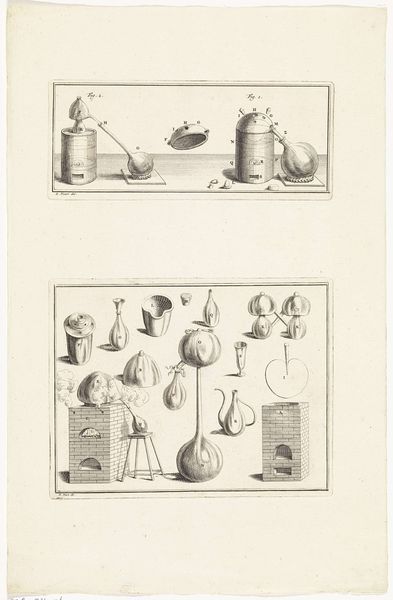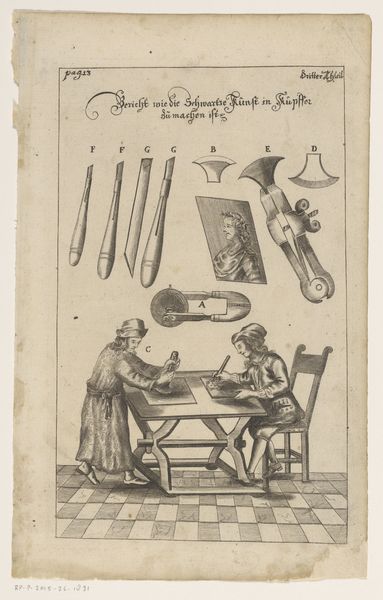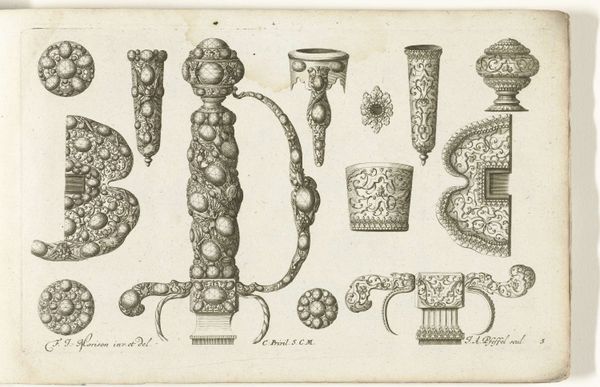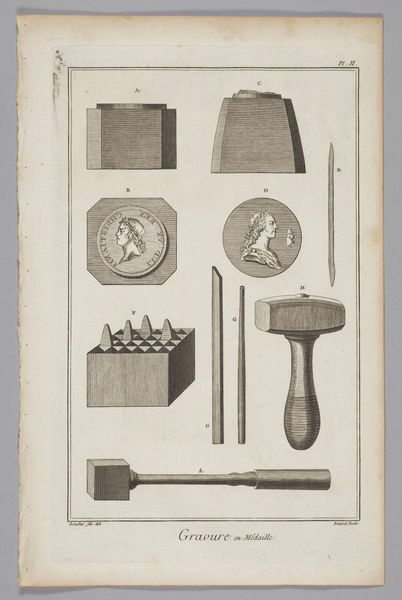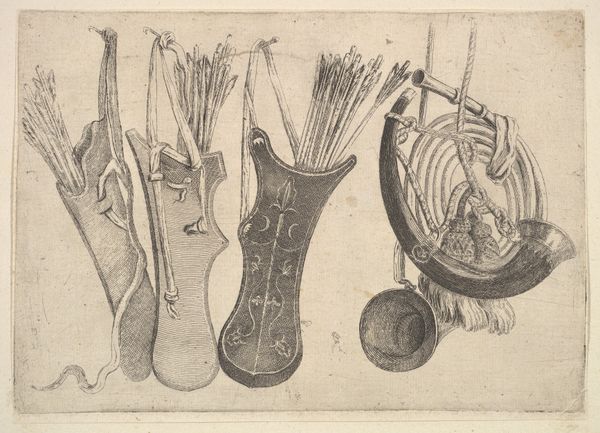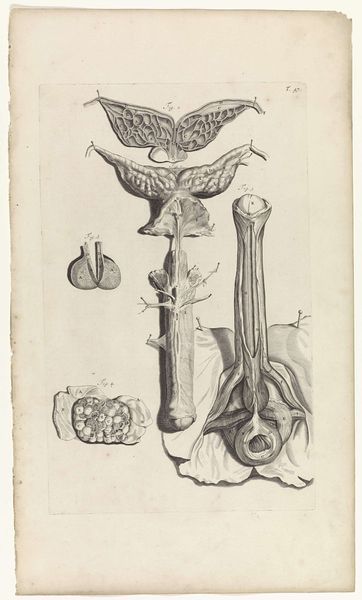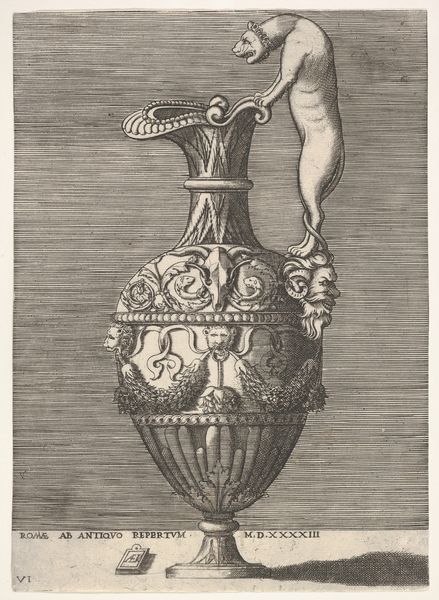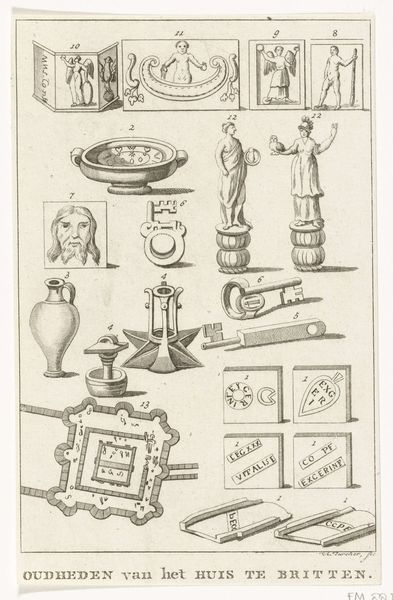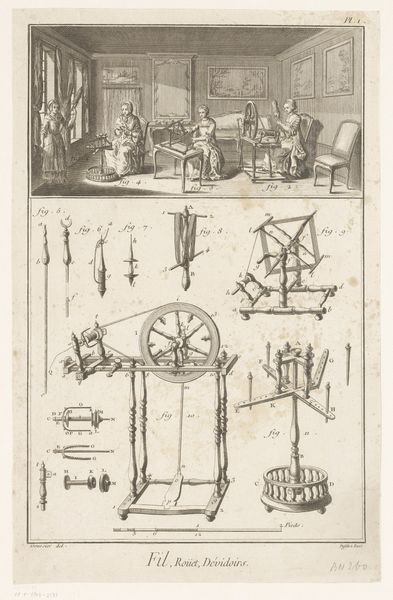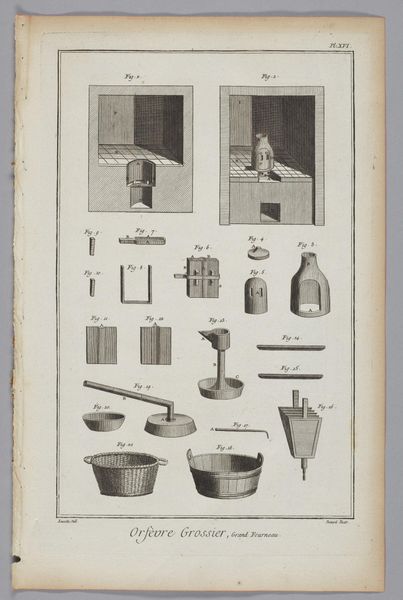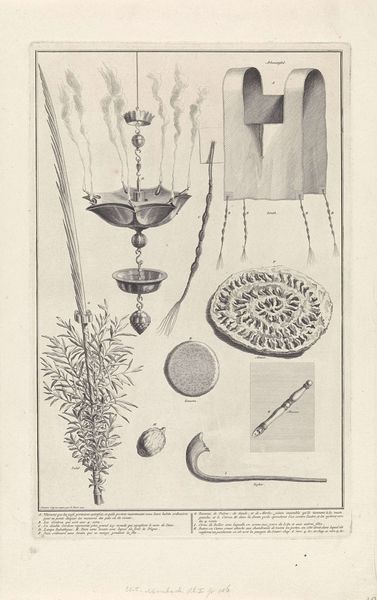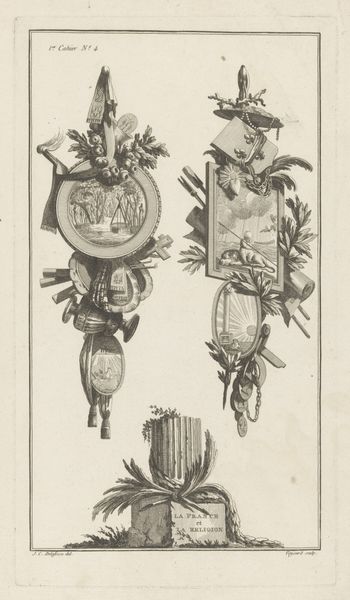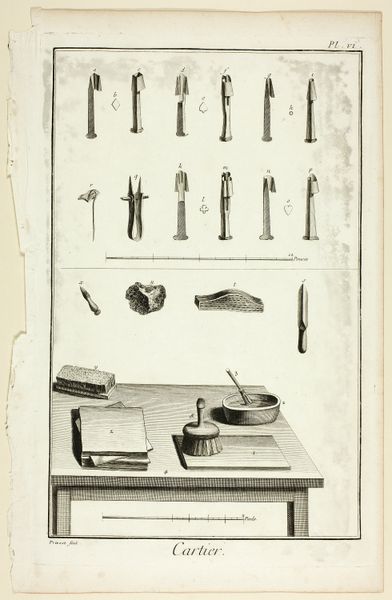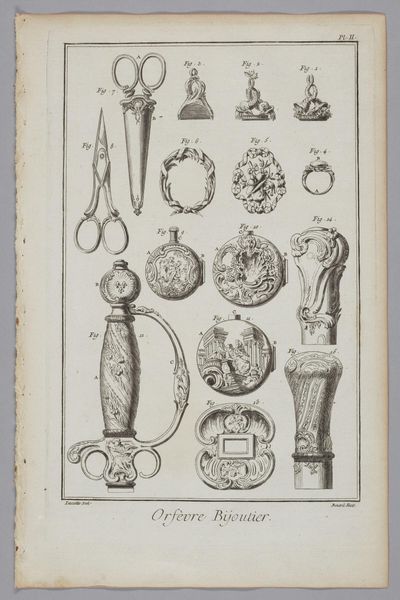
graphic-art, print, woodcut, engraving
#
graphic-art
# print
#
woodcut
#
northern-renaissance
#
engraving
Dimensions: 198 mm (height) x 132 mm (width) (bladmaal)
Editor: Here we have Melchior Lorck’s "Tolv slags forskelligt husgeråd" from 1582. It's a woodcut and engraving print, showing a collection of household objects. It looks almost like a catalogue page, but the objects are so strangely shaped! What catches your eye about this work? Curator: Well, looking through a materialist lens, the immediate draw is to consider this as a document of material culture. Each object, meticulously rendered through woodcut and engraving, speaks to the specific means of production and consumption in the Northern Renaissance. What were these objects made of? Who made them, and for whom? Editor: That’s interesting! I hadn’t thought about it as a record. It makes you wonder who owned these things. Curator: Exactly. Take the ladder, for example. Its inclusion prompts us to ask about construction, carpentry skills, access to wood. Is it for domestic use or trade? And look at the table! A decorated textile cover makes the piece less functional and introduces value to the labor and consumption invested within that one object. What social layers might the objects reveal through their making, owning and use? Editor: So, it’s not just *what* is depicted, but how its existence illuminates a whole network of labour. The detail must've been so painstaking to create. Curator: Precisely. The printmaking itself! Woodcut and engraving required skilled artisans. Think about the time involved, the tools… the cost. These factors influence who would even encounter this image. It speaks volumes about the social context surrounding its production and distribution. What boundaries does the inclusion of craft, like these various objects, blur with the designation of ‘high art’ at the time? Editor: That shifts my perception entirely. Now, I see less a random still life, and more an index of production. A snapshot of material reality at the end of the 16th century! Curator: Indeed, by examining the materials, processes, and social context, we uncover the stories embedded within these everyday items. Each element offers insights into the labor and consumption practices of the era.
Comments
No comments
Be the first to comment and join the conversation on the ultimate creative platform.
